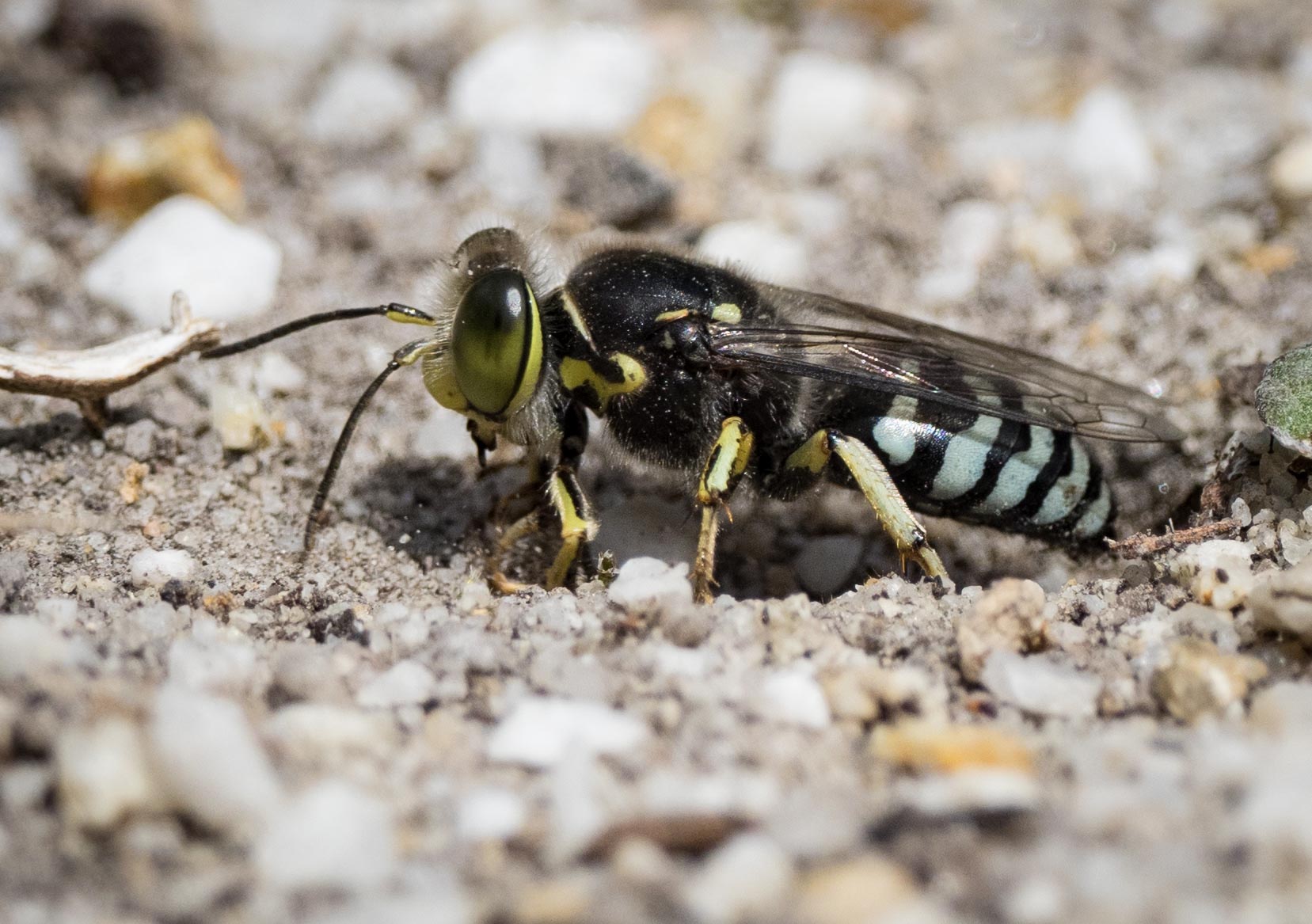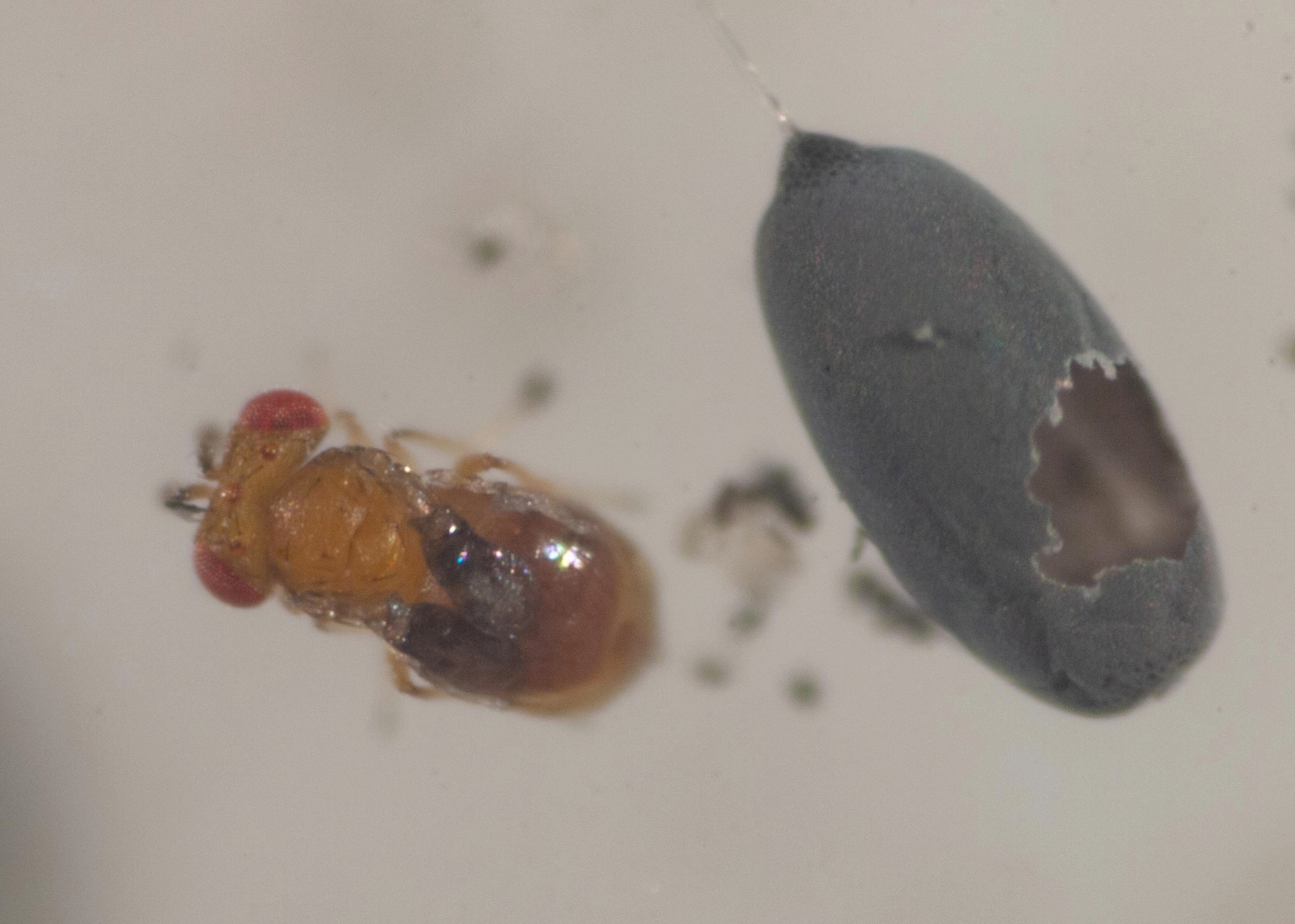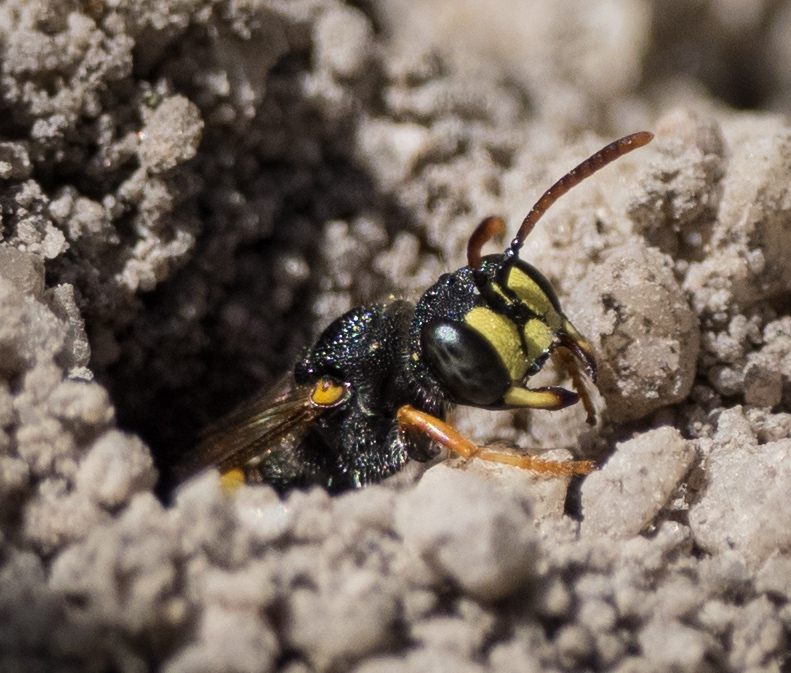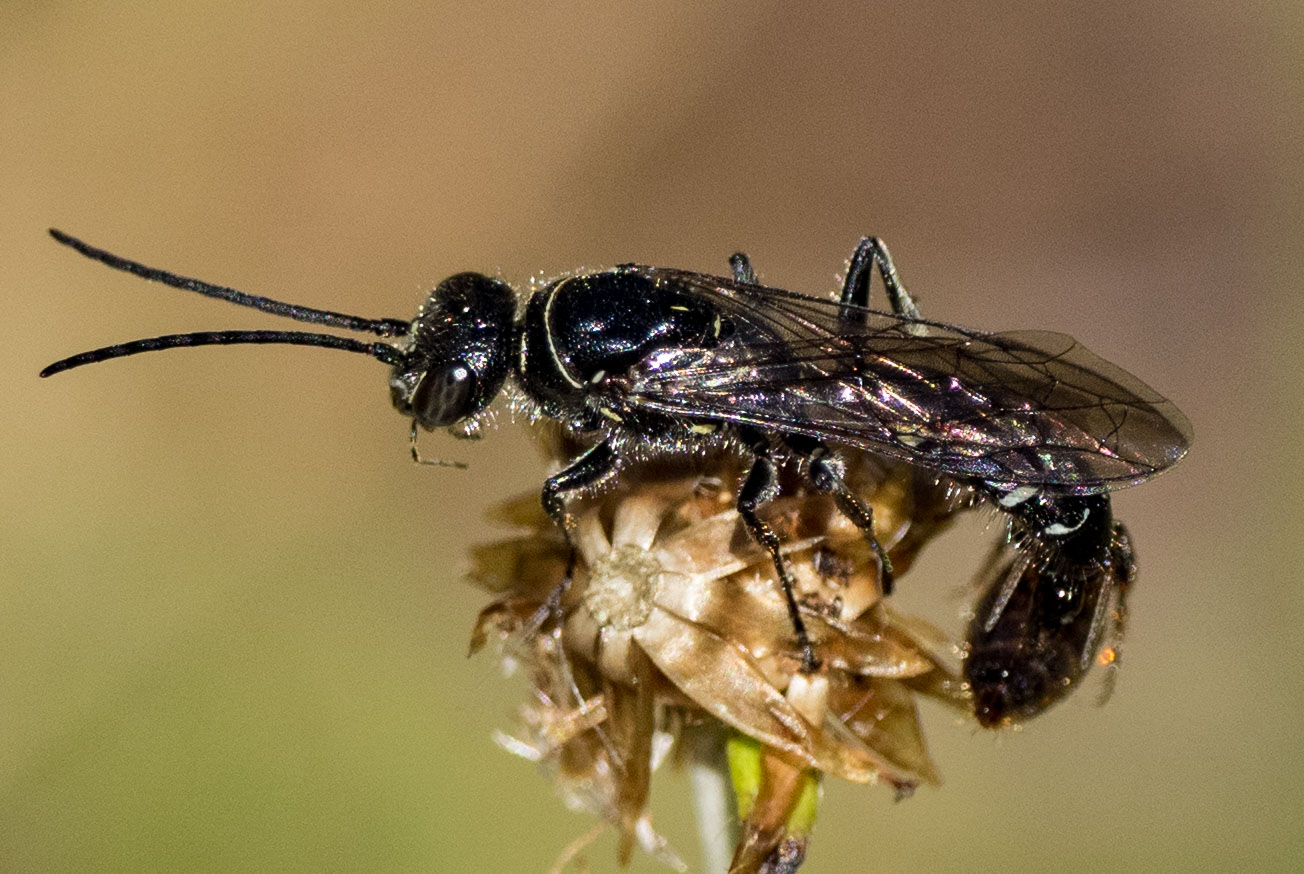Sand Wasp season

After travelling for a week or so, we returned home yesterday to discover patches of the forest floor abuzz with sand wasps.
If anything is going to distract me from stalking native bees it is likely to be the intriguing behaviours of sand wasps. They buzz loudly as they patrol their territories before winging off to hunt or drink from flowers.
Australia is a hotspot for Bembix species, a cosmopolitan genus
WELL-ADAPTED FOR DIGGING
Sand wasps are expert excavators. The spiny 'comb' on the front legs forms an effective rake for dragging sand as they scuttle backwards.
Larger sand grains – which look like boulders in comparison to the size of the insects! – are grasped between the mandibles and similarly dragged.
HUNTERS OF FLIES
The sandy burrows are nests for the developing larvae ... and the little meat-eaters are well-provisioned! I've read that most Bembix species provide each of their developing young with a large number of flies, and that each grub has its own burrow.
1: Returning to the burrow, clutching a paralysed (or perhaps dead) fly
2: Uncovering the burrow opening
3: About to disappear inside, prey held tight between the middle pair of legs.
4: Shortly after this shot, the wasp re-emerged, kicked sand across the burrow opening, and flew off.
SOLITARY, OR PARTLY SOCIAL?
Most general descriptions of sand wasp biology suggest that they are solitary insects. It is noted that they tend to build their burrows in loose colonies – a 'safety in numbers' strategy. Yet there is a hint of more complex social behaviour. Some individuals appear to stand guard near a nest burrow while the burrow owner hunts. And I witnessed two wasps taking turns to enter the same burrow, apparently cooperating rather than competing (see the sequence of four shots, below). Curiouser and curiouser!
1: Wasp A, on guard (?)
3: Wasp B, about to fly off
2: Wasp B, backing out of burrow
4: Wasp A, entering the burrow
BATTLES OR COURTSHIP?
Mating typically takes place in flight, but I'm not sure whether the clashes I've witnessed on the ground are courtship, territorial battles between females, or perhaps a mixture of both.
And whether I'm watching a single species or more is also not clear. The insects certainly differ in size and pattern. Even distinguishing males from females is non-trivial – apparently females can lay both fertilised and unfertilised eggs, the resulting larvae therefore being quite different genetically. No wonder I'm getting confused!
Despite having watched and photographed our local sand wasps over several seasons now, there is much about their behaviour that remains a mystery to me ... which simply means that there will be a sequel to this post, after I spend some more time watching, photographing, and researching.



















